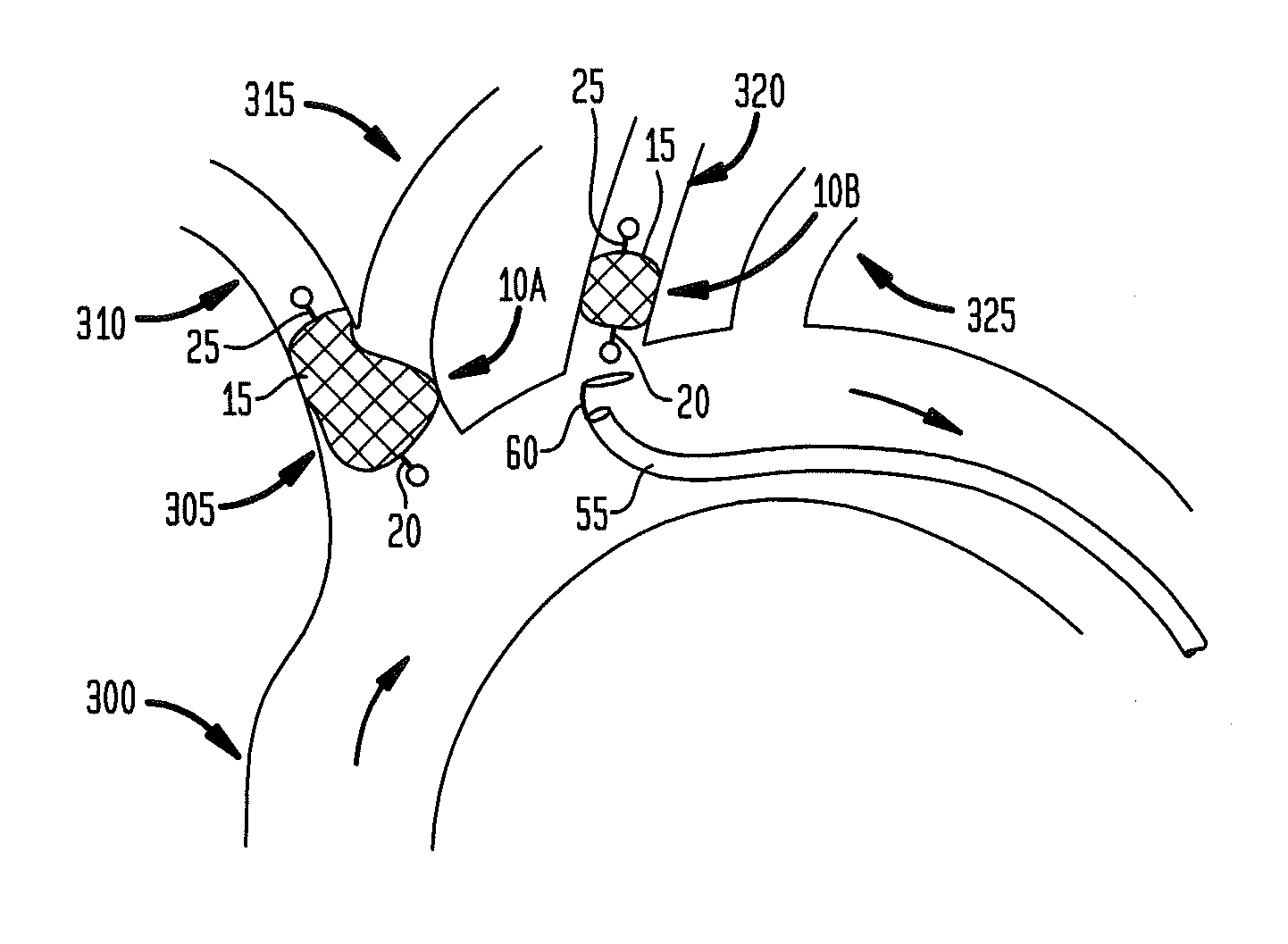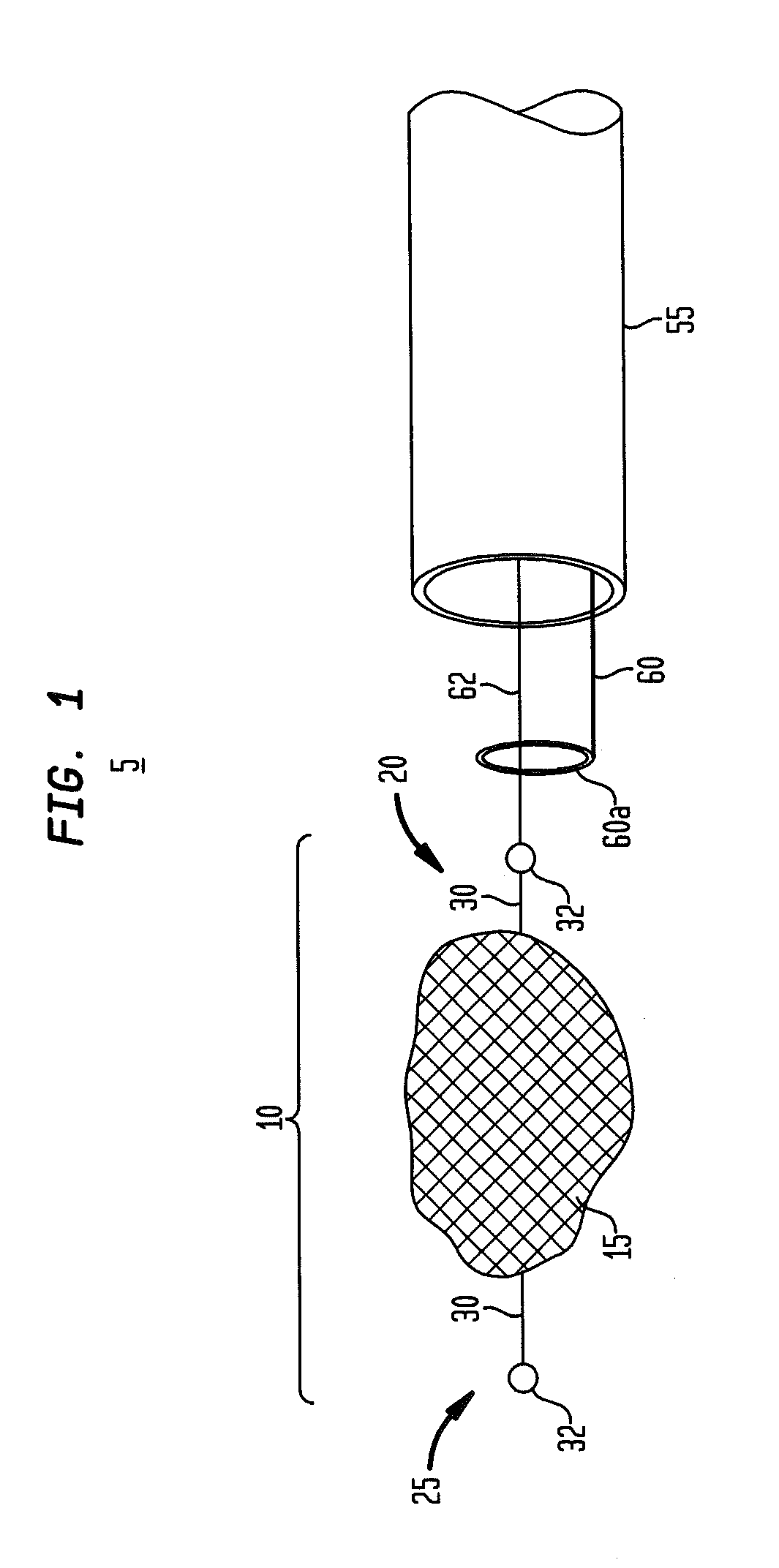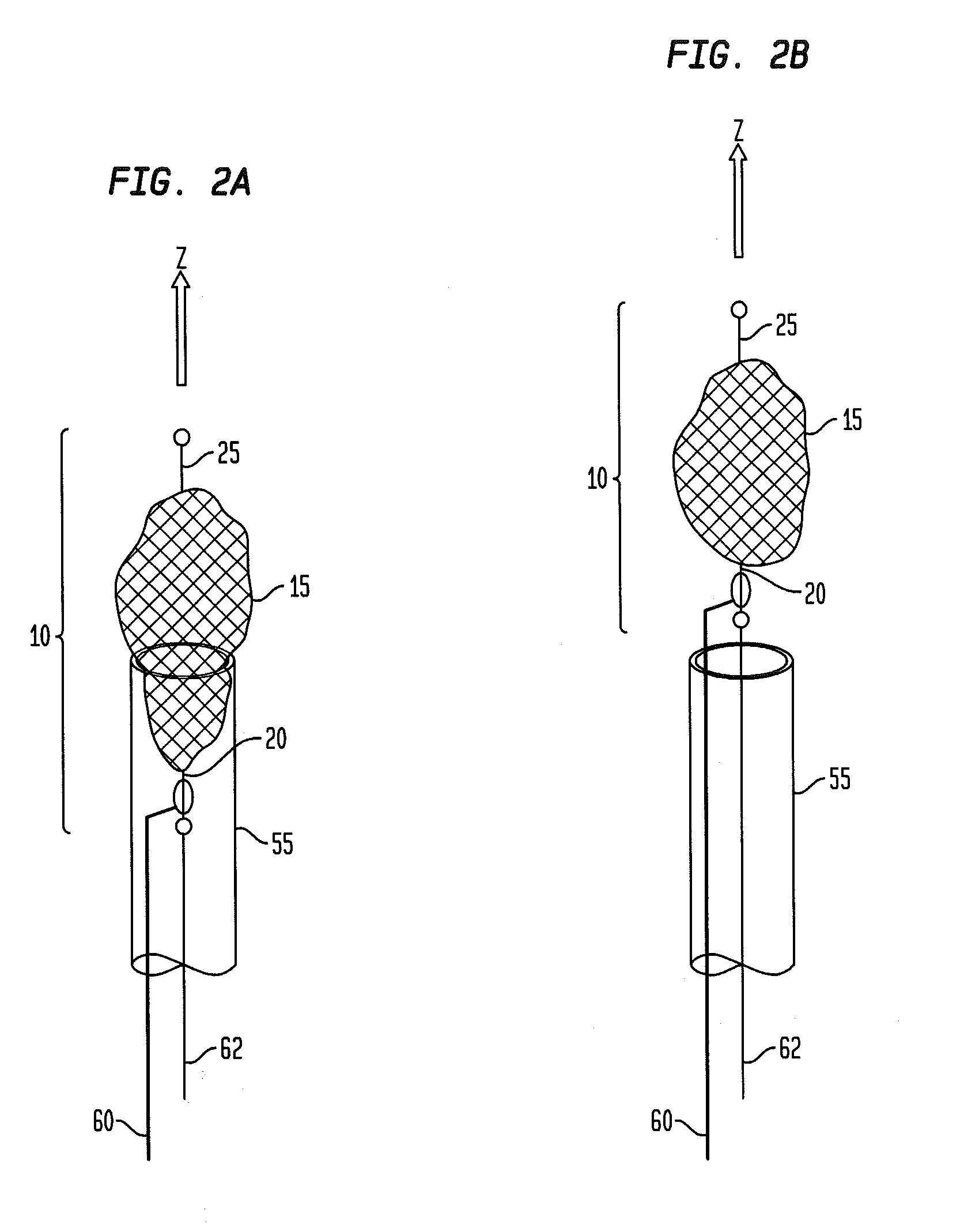Protecting against cerebral embolism
a technology for embolism and cerebral veins, applied in the field of protecting against embolism, can solve the problems of thrombosis, plaque dislocation, and procedure giving rise to potentially life-threatening debris in the patient's bloodstream, and achieve the effect of reducing the risk of stroke associated with medical procedures
- Summary
- Abstract
- Description
- Claims
- Application Information
AI Technical Summary
Benefits of technology
Problems solved by technology
Method used
Image
Examples
Embodiment Construction
[0011]In the description that follows, the terms “proximal” and “distal” are to be taken as relative to a user (e.g., a surgeon or an interventional cardiologist) of the disclosed devices and methods. Accordingly, “proximal” is to be understood as relatively close to the user, and “distal” is to be understood as relatively farther away from the user.
[0012]Referring to FIG. 1, there is shown a side perspective view of a permeable blood vessel plug system 5 in accordance with a first embodiment. The plug system 5 includes a permeable blood vessel plug 10 having a body 15 and two studs 20 and 25. The body 15 of plug 10 may be formed from a woven, braided, or knitted material having openings of sufficient size to allow the passage of blood, but block the passage of particulates greater than a certain size. As such, body 15 acts as a filter. Further, the material of body 15 may be treated with a conventional anti-coagulant in order to inhibit the coagulation of blood on the body and thus...
PUM
 Login to View More
Login to View More Abstract
Description
Claims
Application Information
 Login to View More
Login to View More - R&D
- Intellectual Property
- Life Sciences
- Materials
- Tech Scout
- Unparalleled Data Quality
- Higher Quality Content
- 60% Fewer Hallucinations
Browse by: Latest US Patents, China's latest patents, Technical Efficacy Thesaurus, Application Domain, Technology Topic, Popular Technical Reports.
© 2025 PatSnap. All rights reserved.Legal|Privacy policy|Modern Slavery Act Transparency Statement|Sitemap|About US| Contact US: help@patsnap.com



